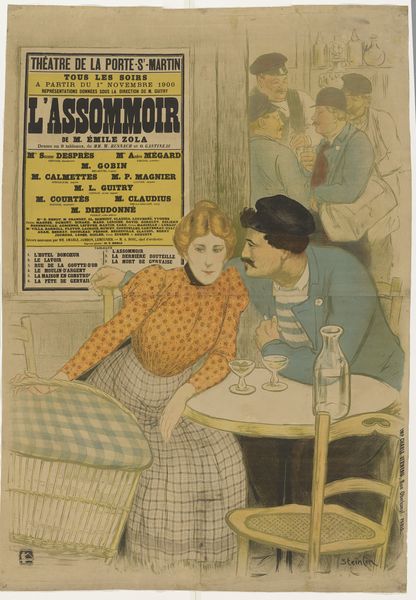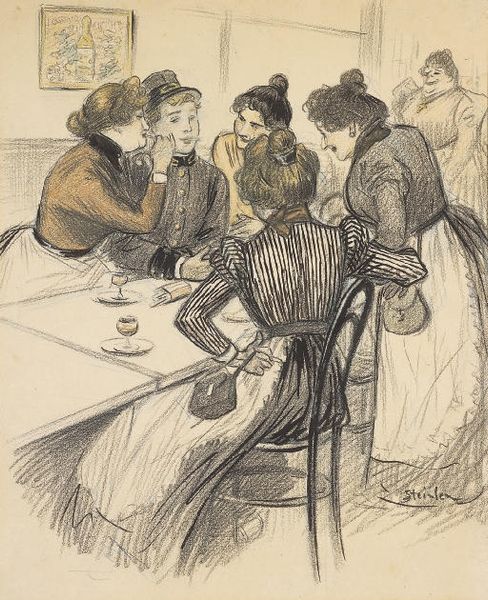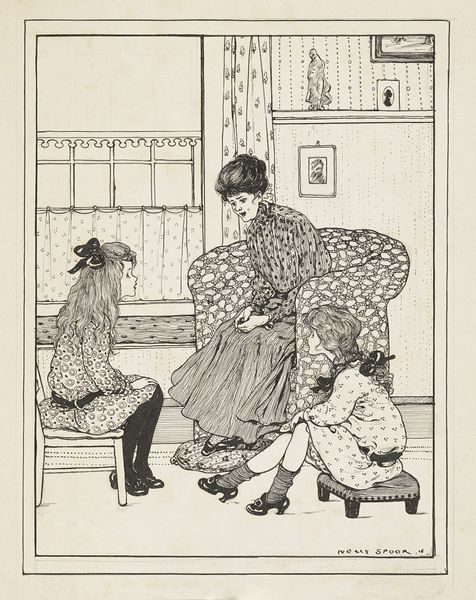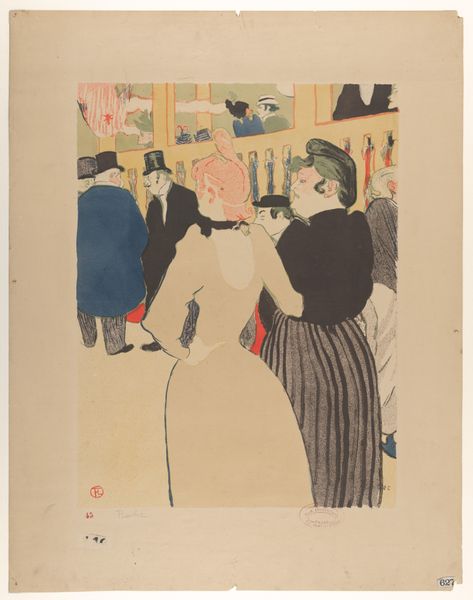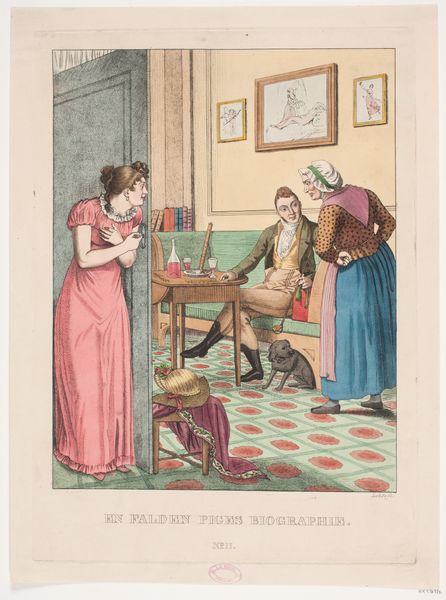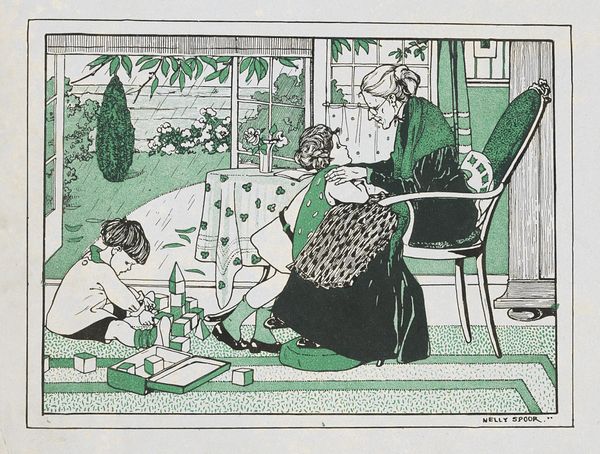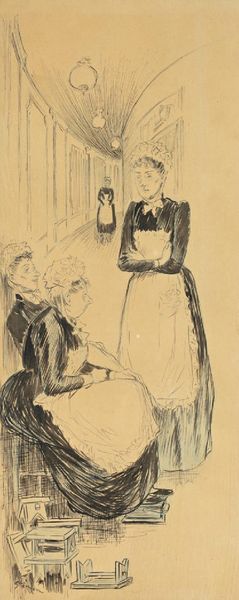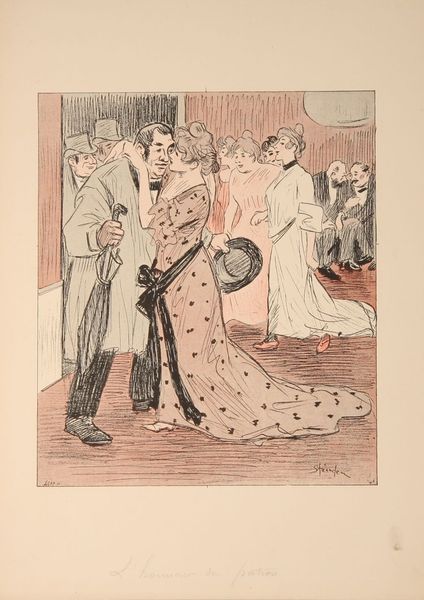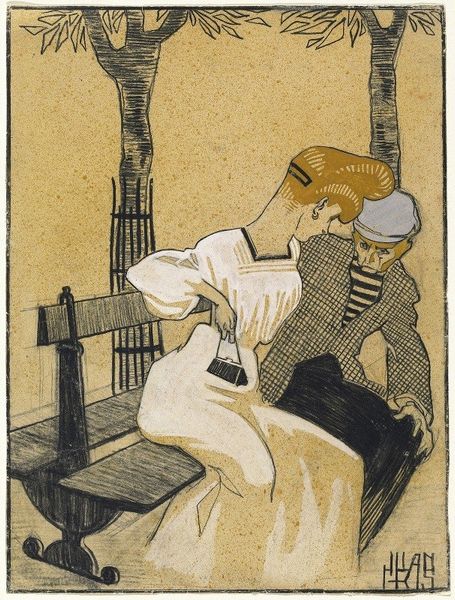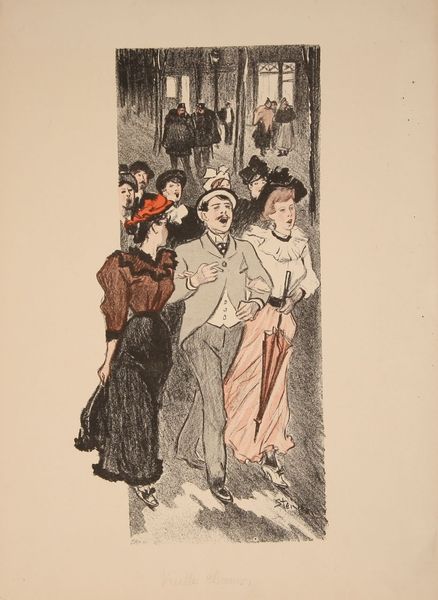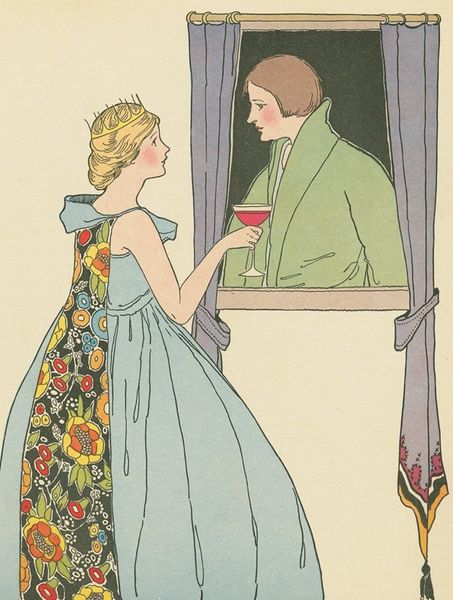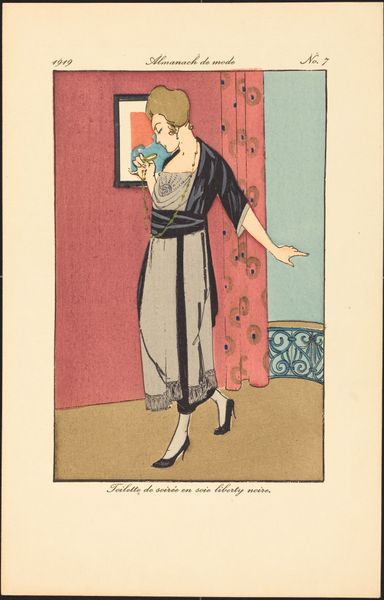
Copyright: Public Domain
Curator: This is Théophile Alexandre Steinlen's lithograph, L'Assommoir, created around 1900. You can find it here at the Art Institute of Chicago. Editor: There's a sense of weary resignation radiating from the woman at the table. The palette feels muted, but the compositions create a tension I find so interesting. Curator: The print showcases Steinlen's command of lithography to illustrate everyday life in Montmartre and Parisian social realism through poster art, reflecting labor and consumption in that specific era. The choice to depict the absinthe drinkers offers social commentary that is impossible to miss. Editor: The way the artist captures the effect of light, particularly on the glassware and the faces, shows an Impressionistic approach, using strokes that almost dissolve into the background. Notice also how he deliberately placed that white rectangle above them, suggesting emptiness. Curator: Right. But the point of Impressionism was to elevate what might be thought of as work for commercial purposes – and raise this process to the level of 'art' for gallery consumption. But Steinlen prints became very popular precisely as a response to societal shifts driven by expanding print culture that allowed affordable images to influence many people. Editor: True, and by using quick strokes in the printing technique to capture fleeting moments, there is the added effect of distilling a much larger complex emotion for the viewer: that these anonymous workers exist on the brink. Their narrative becomes an aesthetic statement through colour and form. Curator: It is, and the subject’s material culture and labor inform much about her circumstances, beyond superficial beauty standards or high-art tropes. This perspective places artistic choices firmly within social frameworks of early 20th-century Paris. Editor: I now see beyond what first appeared to be simplicity in form and material. It prompts deep thinking, almost more of a gut reaction than a theoretical one! Curator: Indeed, art objects carry much more value through careful analysis about its conditions. Thanks to Steinlen, even print material tells the tale of modern change!
Comments
No comments
Be the first to comment and join the conversation on the ultimate creative platform.
